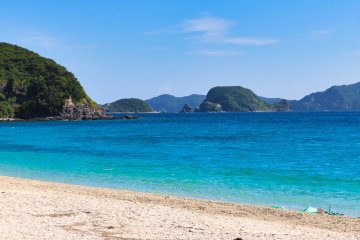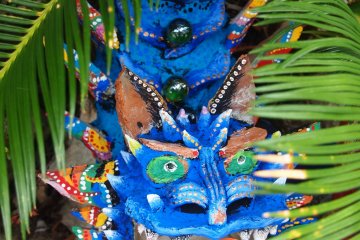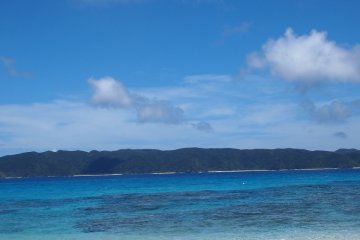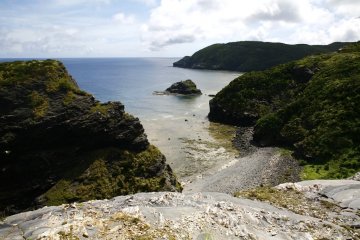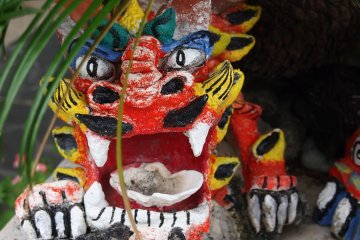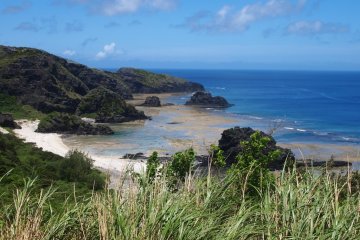As I awake the early morning sunlight bursts through the trees overhead, my tent slowly getting warmer. I slip on some sandals and wander the short distance through the trees to a secluded strip of white sand—Ama beach. My only company is the early-bird kayakers getting ready to hit the water before the heat of the day rises. A morning swim is just the wake-up call I was hoping for, with water so clear that every stray rock or shell can be seen on the sandy seabed. I do a double take as one of the aforementioned rocks begins to move—just a couple of meters away a huge sea turtle bobs gently in the water, basking in the sun, until spotting his unexpected visitor and swimming away. So begins my first day on Zamami Island.
Just a short domestic flight from Tokyo, Zamami feels a world away from the pace of life in the metropolis. Nobody on the island is in a hurry; schoolchildren and elderly islanders greet visitors that are passing through.
Surrounding the village, Zamami is a nature lover’s paradise of jungle-covered hilltops, soaring cliffs and deserted beaches.
Most visitors come to this island for world-class snorkelling and scuba diving, as the water is renowned for visibility and an abundance of coral, fish and turtles.
The campsite is just a fifteen-minute walk from the harbour (maps available from tourist information). Here you can camp in the shade of the trees for as little as ¥300, or ¥1,000 if you need to hire camping gear. I recommend hiring a BBQ set from the campsite and rounding the day off by cooking up some of the fresh local seafood.
Okinawan food brings together the Islands’ Japanese, Chinese, South East Asian and US culinary influences. The most well known dish is Champuru (stir fry), with Goya (bitter gourd), tofu, meat or papaya. Pork and fresh seafood are in abundance, as well as seaweed and locally made soba noodles. Sweet potato is a long established Okinawan staple food, particularly for sweets and cakes. Black sugar, sweet bean filled rice cakes and donuts are also popular Okinawan sweets
Try the locally brewed awamori: an Okinawan rice sake which some distilleries bottle with a habu snake to test the bravery of its drinkers. Orion is the locally brewed beer and Shikuwasa (okinawan lime) is the fruit juice to get that sugar boost on those long hot days.




